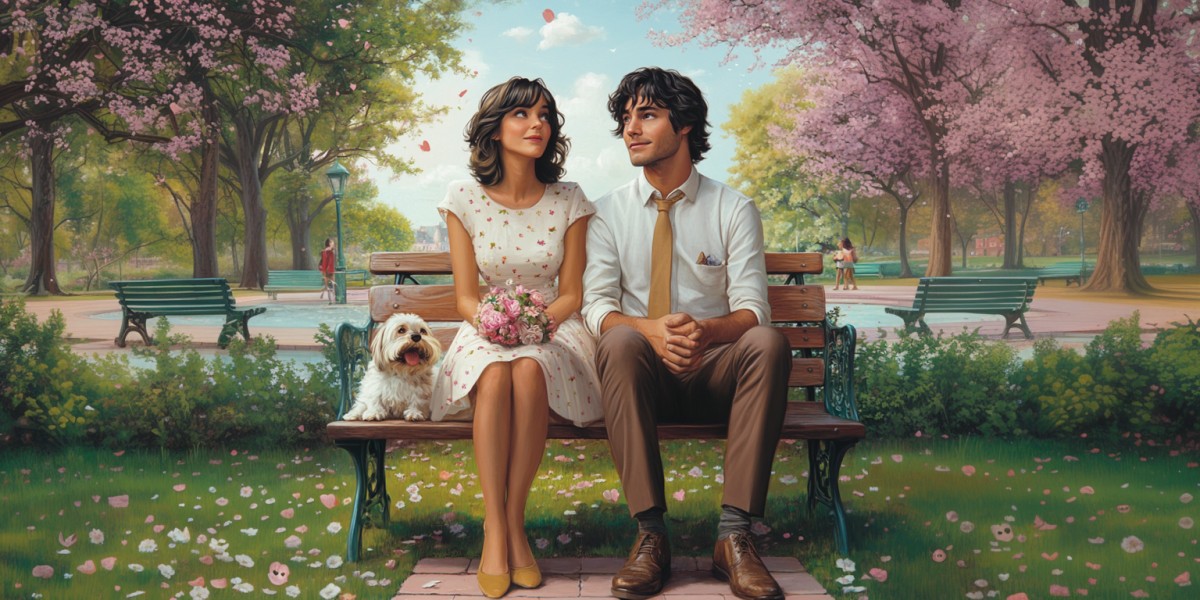How to Structure Romantic Relationships in Rom-Coms
So, you’ve just started outlining a romantic comedy project? That’s great. You’ve got two characters, a few jokes, maybe even a meet-cute set in a dog park or an elevator. But now you’re staring at the page, wondering how to actually build the romantic part. Despite the “comedy,” it’s the emotional journey that makes these stories memorable – not just the gags – and delivering a sincere and believable emotional core is vital to ensuring success in this space.
Too many emerging writers either rush the romance or mistake chemistry for depth. Others stretch a paper-thin premise across a 90 minute screenplay, or 300 pages of a novel, and expect readers to swoon. If you want the relationship to land, you need structure, stakes, and emotional logic. Let’s break that down.
First: Know What You’re Building
A romantic comedy isn’t just “romance + jokes.” It’s a story where love is the engine of character growth. Both leads are changed by the relationship – ideally for the better – but only after being forced to confront something messy, uncomfortable, or unhealed in themselves.
So while the laughs are great, the structure of the romance is where the story earns its emotional payoff. Think of the relationship arc like a three-act play nested inside your bigger story. Here’s how to approach it step by step.
ACT I – Set the Stage, Establish the Stakes
1. The Meet-Cute (or Meet-Clash)
This is where your leads collide for the first time. Yes, it should be memorable. But don’t confuse gimmicks for substance. A meet-cute works best when it sets the tone for their dynamic and hints at deeper conflict.
Tips:
- Make it character-driven, not just situational. How they meet should reflect who they are.
- Establish contrast. Opposites attract is a cliché, but tension works. Find the friction.
- Plant a small surprise: a misunderstanding, mistaken identity, or misread signal that hints at future comedy or conflict.
Example: In “When Harry Met Sally,” the initial car ride isn’t wildly dramatic, but it reveals their clashing worldviews. That’s the seed.
2. Why They Shouldn’t Work
Right after the first spark, show us the reasons they can’t (or won’t) be together. This is key. If there’s no tension, there’s no story. This gap is what your arc will work to close.
Questions to ask:
- What belief or wound keeps each of them from opening up to love?
- What life situation, goal, or external pressure makes the timing bad?
- What do they misunderstand about each other?
Don’t just make them “too busy” or “afraid of commitment.” Dig deeper. Make it personal.
ACT II – Escalate the Connection, Deepen the Stakes
3. Forced Proximity & Reluctant Bonding
This is where the magic starts. Find a reason to keep them in each other’s orbit. Proximity breeds connection – but it’s also a forge for tension, growth, and comedy.
Common structures:
- They must work together (project, business, family event).
- One needs something from the other (fake date, mentor, alibi).
- Circumstances trap them together (road trip, snowstorm, reality show).
Use this time to peel back layers. Let chemistry build naturally through dialogue, shared vulnerability, or moments of unexpected kindness.
Think of the montage as a tool, not a crutch. If you do use one, make each beat count.
4. The Midpoint: Moment of Real Connection
Somewhere near the midpoint, give them a moment that shifts the tone – a spark of real vulnerability or unexpected emotional depth. It can be quiet or bold, but it must feel earned.
This is where they surprise each other. One does something selfless, or sees the other in a new light. It’s a crack in the armour. Not love yet, but the start of trust.
Example: In “Crazy Rich Asians,” the scene at the party where Nick confides his fears about his family gives Rachel a glimpse of the weight he carries. That deepens everything.
5. Rising Hope + Mini-Honeymoon Phase
Now we ride the high. The emotional stakes climb. They flirt, joke, maybe kiss. But this isn’t the end; it’s a setup. A test of how far they’ve come, and what they’re still not facing.
Use this space to:
- Show them genuinely enjoying each other.
- Let the audience want the best for them.
- Plant seeds of what might break them later (lies, secrets, unresolved wounds).
ACT III – The Break, The Mirror, The Choice
6. The Break-Up (or Major Conflict)
The relationship hits a wall. This is essential. If there’s no low point, the high won’t matter. It’s not about punishing the characters – it’s about forcing the truth to surface. This is similar to the “all is lost” phase in the Hero’s Journey, which needs to occur in order for the climax and resolution to feel rewarding.
The cause of the break should:
- Tie back to their core flaw or fear.
- Expose the one thing they haven’t faced in themselves.
- Reveal the cost of not growing.
Avoid random plot contrivances. Make the breakup inevitable given who they are – until they change.
In “The Big Sick,” the break isn’t just about Kumail lying to his parents. It’s about him not knowing who he wants to be.
7. The Mirror Moment (aka, Grow or Die)
After the fallout, give your leads – especially your protagonist – space to reflect. This is where they face the part of themselves that’s been holding them back.
This is the “what have I done?” beat. But it’s also, “What do I need to become if I want this love to last?”
Make it active. They should do something that shows change: confront someone, take a risk, admit the truth, let go of pride.
8. The Grand Gesture (But Make It Earned)
Now it’s time to rebuild the bridge. But no empty speeches or airport chases unless they’re rooted in real growth. The final gesture needs to:
- Acknowledge the conflict.
- Show personal change.
- Take a risk emotionally.
Sometimes both leads change and meet in the middle. Sometimes one makes the leap. Either way, the romance resolves not with perfection, but with choice.
In “To All the Boys I’ve Loved Before,” Lara Jean owns her feelings and takes action; not because she’s fixed, but because she’s grown brave enough to be vulnerable.
Bonus: Don’t Forget the Comedy
The structure is emotional, but comedy is the flavour. Sprinkle it through:
- Awkward encounters
- Verbal sparring
- Situational disasters
- Side characters who stir the pot
But remember: comedy should come from truth, not hijinks for hijinks’ sake. A character’s blind spot, insecurity, or ego is way funnier than slipping on a banana peel.
Rom-Com Red Flags to Avoid
- Love as reward. Characters shouldn’t earn love just by enduring hardship. They must grow. Giving in or regressing isn’t an outcome that readers or viewers will enjoy.
- Too-perfect leads. Flawed is funny. Flawed is real. Perfect is boring.
- One-sided arcs. Don’t let one character do all the changing while the other floats.
- No real conflict. If there’s nothing keeping them apart, there’s no reason to cheer when they come together.
- Over-reliance on tropes. Use them, twist them, subvert them. Tropes can be great storytelling shortcuts in genre work like this, but keep them fresh. Don’t coast on them.
Finally: Make Us Believe It
The best romantic comedies don’t just make us laugh – they make us feel. The audience needs to get behind your couple and want the best for them, not because they’re hot or quirky, but because we recognise the fear, hope, and longing they’re working through. The love story becomes a mirror: of risk, courage, and choosing joy anyway.
So don’t just throw your characters together and hope for sparks. Build the fire, beat by beat. Earn the kiss. Earn the laugh. And most of all, earn the heart.



-0 Comment-